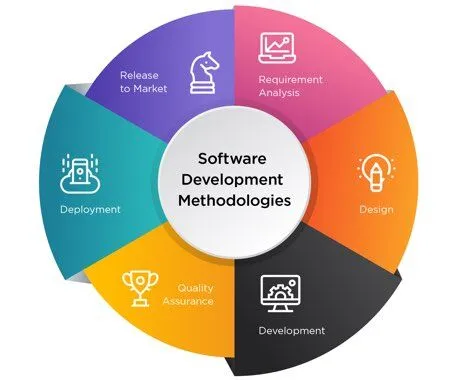Software development has come a long way since the early days of programming. Over the years, methodologies have evolved to address the increasing complexity of software projects and the need for efficient and effective processes. Understanding this evolution is essential for anyone involved in software development, as it provides valuable insights into how we arrived at today’s practices and where we might be headed in the future.
The Waterfall Model: The Beginning
In the early days of software development, the Waterfall model was the dominant methodology. Introduced in the 1970s, it was one of the first formal software development methodologies. The Waterfall model is a linear and sequential approach that divides the development process into distinct phases: requirements, design, implementation, verification, and maintenance. Each phase must be completed before moving on to the next, and there is little room for revisiting previous stages.
Advantages of the Waterfall Model:
- Simplicity: The linear approach is easy to understand and manage.
- Documentation: Extensive documentation is produced, which can be useful for future reference.
Drawbacks of the Waterfall Model:
- Inflexibility: Changes to requirements or design are difficult to implement once a phase is completed.
- Risk of Misalignment: Clients may not see the product until it is nearly complete, which can lead to misaligned expectations.
Agile Methodology: The Shift to Flexibility
In the 1990s, the Agile Manifesto introduced a new way of thinking about software development. Agile methodologies prioritize flexibility, collaboration, and customer feedback. Agile breaks the project into small, manageable units called sprints, allowing teams to quickly adapt to changes and deliver incremental improvements.
Advantages of Agile:
- Customer Involvement: Regular feedback from clients ensures the product meets their needs.
- Flexibility: Agile allows for changes at any stage of the development process.
- Improved Quality: Continuous testing and feedback improve the overall quality of the software.
Drawbacks of Agile:
- Lack of Documentation: The focus on working software can result in less formal documentation.
- Scope Creep: Flexibility can lead to uncontrolled changes and scope creep if not managed carefully.
DevOps: Bridging Development and Operations
As Agile became widely adopted, the need to bridge the gap between development and operations became apparent. This led to the rise of DevOps, a methodology that emphasizes collaboration between developers and IT operations. DevOps aims to automate and integrate the processes of software development and IT operations to improve the speed and reliability of software delivery.
Advantages of DevOps:
- Faster Delivery: Automated processes and continuous integration lead to faster delivery times.
- Improved Collaboration: Cross-functional teams work together, leading to better communication and understanding.
- Reliability: Continuous monitoring and testing ensure that software is reliable and stable.
Drawbacks of DevOps:
- Complexity: Implementing DevOps can be complex and requires cultural and technical changes.
- Resource Intensive: Setting up automation and continuous integration requires significant investment.
The Future: AI and Machine Learning in Development
Looking ahead, artificial intelligence (AI) and machine learning (ML) are poised to revolutionize software development methodologies. These technologies can automate routine tasks, provide insights through data analysis, and even assist in coding. AI-driven development could lead to faster, more efficient, and more innovative software solutions.
Potential Advantages of AI in Development:
- Automation: Routine tasks can be automated, allowing developers to focus on more complex issues.
- Predictive Analysis: AI can provide insights and predictions that inform better decision-making.
- Code Generation: AI tools can assist in writing and optimizing code, reducing development time.
Challenges of AI in Development:
- Ethical Concerns: The use of AI raises ethical questions about decision-making and accountability.
- Complexity: Implementing AI requires expertise and resources, which can be a barrier for some organizations.
Conclusion
The evolution of software development methodologies reflects the industry’s ongoing quest for efficiency, quality, and adaptability. From the structured Waterfall model to the flexible Agile and collaborative DevOps, each methodology has contributed to the way we develop software today. As we look to the future, AI and machine learning promise to bring further innovation and transformation. By understanding the history and evolution of these methodologies, developers can better navigate the complexities of software development and drive future advancements.

